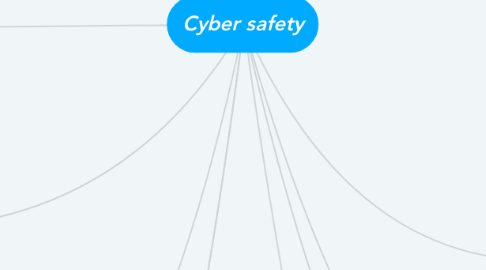Cyber safety
by Hashim Abdi

1. Posting private infomation
1.1. When you publish information about someone without permission, you potentially expose yourself to legal liability even if your portrayal is factually accurate. Most states have laws limiting your ability to publish private facts about someone and recognizing an individual's right to stop you from using his or her name, likeness, and other personal attributes for certain exploitative purposes, such as for advertising goods or services. These laws originally sprang from a policy objective of protecting personal privacy; the aim was to safeguard individuals from embarrassing disclosures about their private lives and from uses of their identities that are hurtful or disruptive of their lives. Over time, the law developed and also recognized the importance of protecting the commercial value of a person's identity -- namely, the ability to profit from authorizing others to use one's name, photograph, or other personal attributes in a commercial setting.
2. Password
2.1. Passwords are a means by which a user proves that they are authorized to use a computing device. A single device may have multiple users, each with their own password. Passwords are not unlike a lock-and-key system, in which only the right key will enable a person to have access. The difference is that each person has a different key for the same door.
3. Sources of infomation
3.1. An information source is a person, thing, or place from which information comes, arises, or is obtained. Information souces can be known as primary or secondary.[1] That source might then inform a person about something or provide knowledge about it. Information sources are divided into separate distinct categories, primary, secondary, tertiary, and so on.[2]
4. Offensive or illegal infomation
4.1. The following types of content may be classified as prohibited: footage of real or simulated violence, criminal activity or accidents from video clips, games or films sexually explicit content images of child sexual abuse content that advocates the doing of a terrorist act content instructing or promoting crime or violence.
5. Longevity of content
5.1. You may also see people posting the same tweet to their Twitter feed at different times of the day. This is maybe the one place where it’s okay to do that. I often will schedule up a bunch of tweets; reusing basically the same tweet 3-5 times, just on different days, at different times of the day. Truthfully, you will likely have a different audience each time.
6. cyber bullying
6.1. Cyberbullying is bullying that takes place over digital devices like cell phones, computers, and tablets. Cyberbullying can occur through SMS, Text, and apps, or online in social media, forums, or gaming where people can view, participate in, or share content. Cyberbullying includes sending, posting, or sharing negative, harmful, false, or mean content about someone else. It can include sharing personal or private information about someone else causing embarrassment or humiliation. Some cyberbullying crosses the line into unlawful or criminal behavior.
7. Privacy
7.1. Privacy may be lessened by surveillance – in this case through CCTV. Privacy is the ability of an individual or group to seclude themselves, or information about themselves, and thereby express themselves selectively. The boundaries and content of what is considered private differ among cultures and individuals, but share common themes. When something is private to a person, it usually means that something is inherently special or sensitive to them. The domain of privacy partially overlaps security (confidentiality), which can include the concepts of appropriate use, as well as protection of information. Privacy may also take the form of bodily integrity
8. Trolling
8.1. troll is Internet slang for a person who intentionally tries to instigate conflict, hostility, or arguments in an online social community. Platforms targeted by trolls can include the comment sections of YouTube, forums, or chat rooms. Trolls often use inflammatory messages to provoke emotional responses out of people, disrupting otherwise civil discussion. Trolling can occur anywhere that has an open area where people can freely post their thoughts and opinions.
9. Permission to use infomation
9.1. This section outlines the basic steps for obtaining permission. Subsequent chapters provide more detailed information about this process for each type of permission you may be seeking, whether for text, photographs, music, or artwork. In general, the permissions process involves a simple five-step procedure: Determine if permission is needed. Identify the owner. Identify the rights needed. Plan Ahead for Permission. Contact the owner and negotiate whether payment is required. Get your permission agreement in writing.


